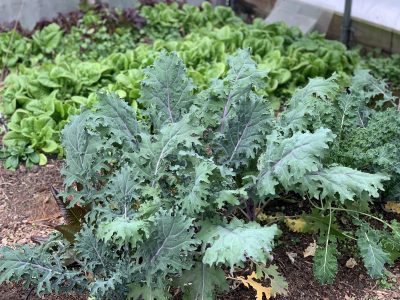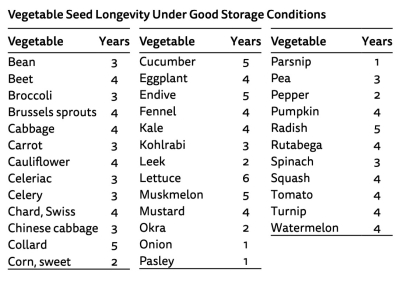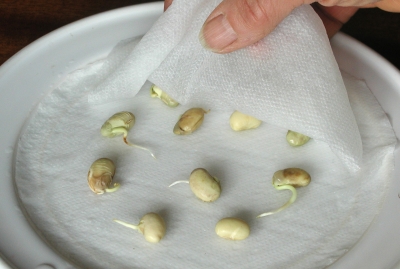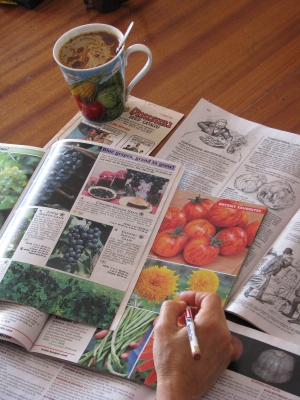SEED TIME
Late this Year
This year I’m late, but not too late, with my seed orders. Usually, I get them in by a couple of weeks ago.
The only seeds that I’ll soon be planting are those of lettuce, arugula, mustard, and dwarf pak choy. They’ll fill any bare spaces soon to be opening up where winter greens have been harvested. No rush, though, because I have seeds left over from last and previous years of these vegetables, and they keep well if stored under good conditions.

I’ve usually sowed onion seeds early also, in flats in the greenhouse in order to give plants enough time to become large transplants. Large transplants translates to large plants out in the garden before long days force them to shift from growing leaves to, instead, swelling their bulbs. More leaves before that shift makes for larger bulbs.
Last year, because of poor onion germination in the flats, I ended up getting fresh seeds and sowing them directly in the garden in early spring. Keeping the bed moist promoted quick germination and, by August, the bulbs stood up well, size-wise, to those from seeds sown in the greenhouse in past Februarys.
Seed Longevity
Onion and leek seeds don’t keep very well. Viable seeds are living, albeit dormant, embryonic plants which do not live forever. Conditions that slow biological and chemical reactions, such as low temperature, low humidity, and low oxygen, also slow the aging of seeds.
Seeds differ in how long they remain viable. Except under the very best storage conditions, it’s not worth the risk to sow onion, parsnip, or salsify seeds after they are more than a year old. Two years of sowings can be expected from seed packets of carrot and sweet corn; three years from peas and beans, peppers, radishes, and beets; and four or five years from cabbage, broccoli, Brussels sprouts, cucumbers, melons, and lettuce.

Among flower seeds, the shortest-lived are delphinium, aster, candytuft, and phlox. In general, though, most annual flower seeds are good for one to three years, and most perennial flower seeds for two to four years.
In a frugal mood, I might do a germination test for a definitive measure of whether an old seed packet is worth saving. Counting out 10 to 20 seeds from each packet to be tested, I spread them between two moist paper towels on a plate. Another plate inverted over the first plate seals in moisture and the whole setup then goes where the temperature is warm, around 75 degrees.
After one to two weeks, I peel apart the paper towels and count the number of seeds with little white root “tails”. If the percentage is low, the seed packet from which the seeds came gets tossed into the compost pile. (I don’t give them away!). Or, I might use the seeds and adjust their sowing rate accordingly.

No one knows exactly what happens within a seed to make it lose its viability. Besides lack of germination, old seeds undergo a slight change of color, lose their luster, and show decreased resistance to fungal infections. There’s more leakage of substances from dead seeds than from young, fresh seeds, so perhaps aging influences the integrity of the cell membranes. Or, since old seeds are less metabolically active than young seeds, the old seeds leak metabolites that they cannot use.
Finally, Get My Orders In
Today I dug out my shoeboxes of seeds from the unheated workshop and noted what was missing and what was too old.
Needed still are yet undetermined, good varieties of Brussels sprouts, celeriac, semi-hot pepper, and melon. (Any suggestions for good varieties?) Also one or more packets of Bartolo cabbage, Blues Michili cabbage, Shintokiwa cucumber, Golden Bantam 8-row sweet corn, Blacktail Mountain watermelon, Carmen pepper, Mammoth sunflower, and Empress of India nasturtium.

And, of course, some tomato varieties need replenishment: Sungold, Anna Russian, Nepal, Carmello, San Marzano, and Amish Paste. They will join Belgian Giant, Pink Brandywine, Paul Robeson, and Blue Beech out in the garden.
A colorful and flavorful growing season is in the offing.

